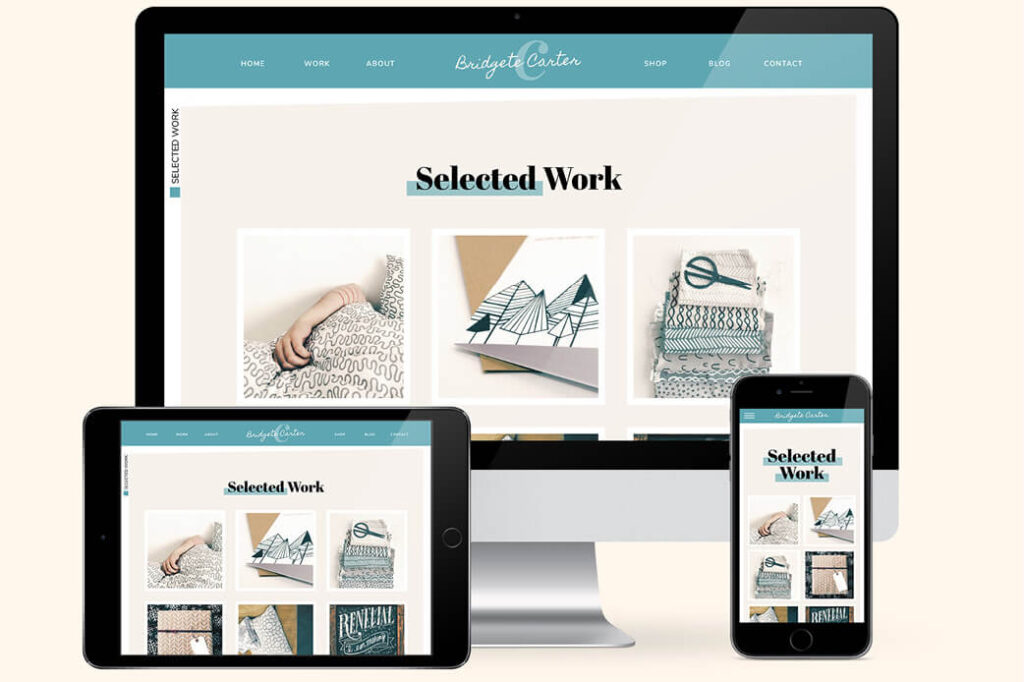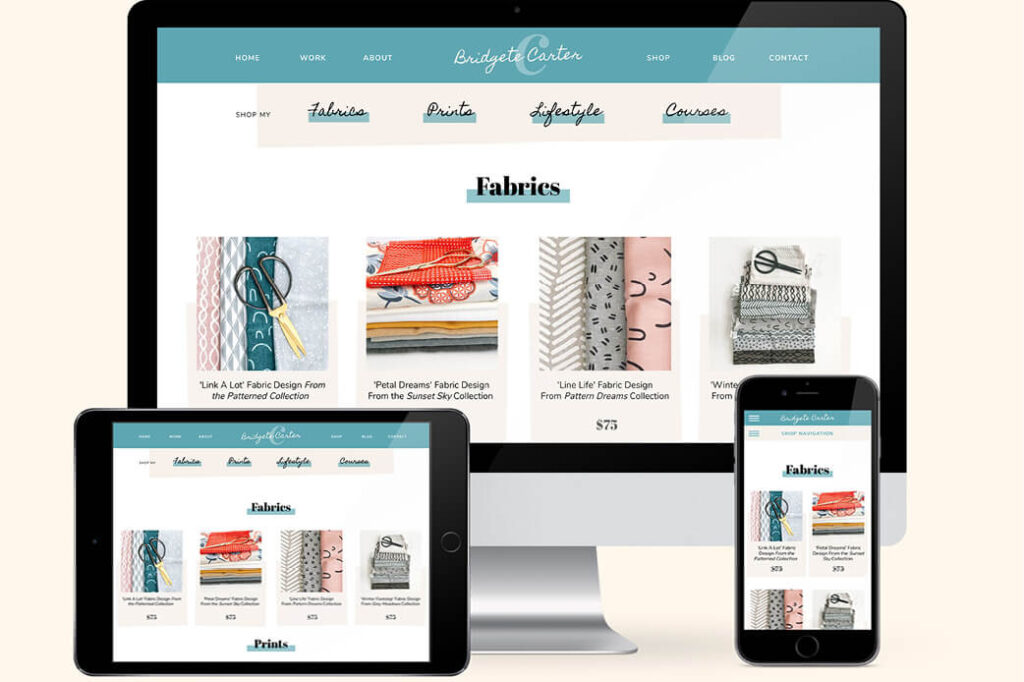grab our FREE
‘Do’s & Don’ts of what to add to your website’ Guide.
‘Do’s & Don’ts of what to add to your website’ Guide.
emails with additional helpful content.
Hi, we're so glad you found us.
We love helping creatives like you finally have the website you’ve always wanted.
few simple steps
Follow us
Keeping your Website looking fresh with regular Maintenance
Many businesses fail to realise the importance of regular website maintenance. In this blog post, we’ll discuss why regular maintenance is critical and how it keeps your website looking fresh. We’ll look at ideas for activities such as reviewing content, fixing broken links, and refreshing design elements.

You’ve created your website – now what?
After creating a strategically designed website, the next step is to maintain it.
To optimise your website’s performance, several key factors must be considered. They include:
Enhancing the User Experience

No matter how visually appealing your website may be, if it is:
• Difficult to navigate
• Slow to load
Visitors will quickly lose interest and look elsewhere for their needs.
Ensure your website is mobile-friendly
With more and more people accessing the internet via smartphones and tablets, it’s essential that your website is responsive and adapts seamlessly to different screen sizes.
By optimising for mobile, you ensure that users have a consistent and enjoyable experience no matter what device they are using.
This improves the overall user experience and helps with search engine optimization.
Improve Page Loading Speed

In today’s fast-paced digital world, users have little patience for slow-loading websites.
Even a one-second delay in page load time can significantly increase bounce rates, frustration and abandonment.
To prevent this:
- Minimize the file sizes of your images and videos
- Optimise your code to reduce unnecessary scripts and plugins
Regularly monitoring and optimizing your website’s loading speed will go a long way in keeping visitors engaged and coming back.
Refine the Overall Design and Layout of Your Website
Is your website intuitive and easy to navigate?
A cluttered and confusing layout can quickly turn off visitors and make it difficult for them to find the information they are looking for.
Are the fonts and colour schemes visually appealing and consistent with your brand?
By simplifying the design, using clear and intuitive navigation menus, and strategically placing important content, you can create a website that is easy to navigate and visually appealing.
Prioritise Accessibility
Ensure that your website meets accessibility guidelines, such as:
• Providing alternative text for images.
• Using clear headings for easy navigation.
By making your website accessible to all users, you improve the user experience and demonstrate inclusivity and care for your audience.
Stay Ahead of the Competition
First and foremost, regularly analyse and benchmark your website against your competitors.
Stay informed about the best practices in your industry to ensure your website remains current and relevant.
By closely examining what others are doing, you can identify opportunities for improvement and differentiate yourself from the competition.
Create Content
Consistently creating valuable, informative, and engaging content is a surefire way to establish your website as a go-to resource for your audience.
Everything you create should link back to your website including your:
- Blog posts
- YouTube videos
- Podcasts
- Pinterest pins
By offering unique insights, expert advice, or compelling storytelling, you can position yourself as a thought leader in your industry and attract a loyal following.
Leverage Social Media
Establish a strong presence on platforms most relevant to your target audience and actively engage with your followers.
Share your content, respond to comments and messages, and participate in industry conversations.
By being active on social media, you increase your visibility and build meaningful connections with your audience.
Grab our Instagram Dimensions Cheat Sheet here.
Keep Learning
Never stop learning and experimenting.
Keep up with the latest technological advancements and tools to enhance your website’s performance and user experience.
Continuously test and optimise various elements of your website to see what resonates best with your audience.
By staying curious and open to new ideas, you can stay ahead of the competition and continuously improve your website.
Prevent Outdated Design
Avoid Website Trends
To prevent your website from falling victim to outdated design, we prefer a classic design that can stand the test of time.
Just as fashion trends come and go, website design trends can quickly become outdated, leading to a lacklustre user experience and decreased engagement.
You can always add small elements that might be trending, but don’t let them become the main focus. Instead, think of it as an accent that can be added or removed.
By regularly assessing your website’s design and making necessary updates, you can ensure it remains fresh, visually appealing, and in line with the latest industry standards.
Website Design Audits
This involves reviewing your website’s layout, colour scheme, typography, and overall visual hierarchy.
Consider whether these elements align with your brand identity and whether they effectively communicate your message to your audience.
We conduct an audit on every website template we create (we can do that for you here), and there are 14 areas we always examine before we hit publish.
Effective Strategies for Website Maintenance
Audit Your Content

Regularly review and update your website’s content.
Keep your information accurate, relevant, and up to date, ensuring that visitors find valuable and current information when they land on your site.
Create a habit of auditing your content to identify areas for improvement. Such as outdated statistics or broken links, and make necessary updates.
Conduct Regular Checks
Identify any issues that may arise, such as slow loading times or broken links.
These issues can negatively impact user experience and result in visitors leaving your website.
Use tools and software to analyse your website’s performance metrics and take proactive measures to improve loading speed and overall functionality. We use and recommend Hotjar.
Practical Tips for Website Maintenance
Take off dates on your blog
Not everyone agrees with this theory, but we stand by it.
And we recommend it because it’s what we do on our blogs.
Check them out here.
Adding dates to a blog – age it automatically.
If a blog contains helpful, evergreen content adding a date can stop people from reading it.
You may have written a blog years ago (and the information is just as helpful today as the day you wrote it), but as soon as the viewer sees a past date, they may assume it’s old information.
Monthly Content Reviews
Review all your blog posts and make any necessary updates to make them as useful as possible.
Updating old posts is also great for SEO.
Yearly Reviews
- At the beginning of each year change all year references to the new year.
- Update your copyright year in your footer.
- Check each website page, especially mentioning years.
- If you have opt-ins that mention dates, update them as well.
Here are some more tips to give your website a Spring Clean!
You Did it!
That’s a wrap on Keeping Your Website Looking Fresh With Regular Maintenance. Don’t let your website become outdated and lose potential customers.
In this blog, we unveiled the secrets to a stunning and up-to-date online presence. Will you be using these tips on your website? Let us know, and in the meantime, Follow us on Pinterest for more blog posts like this.
Where to now?
Want more website tips? Check out the blogs below.
- How to have a Stress-Free Launch with our Showit Website Audit
- The Best Way to Layout and Design Your Website
- Planning on updating your current website? (Do this first).
Like the Blog Post?
PIN IT FOR LATER. And for more helpful tips follow us on PINTEREST.

Search
Create & launch your website in a
few simple steps
FREE GUIDE
While you’re here,
grab our FREE
‘Do’s & Don’ts of what to add to your website’ Guide.
‘Do’s & Don’ts of what to add to your website’ Guide.
When you sign up, we’ll send you
emails with additional helpful content.
About Lavinia & Tom
Hi, we're so glad you found us.
We love helping creatives like you finally have the website you’ve always wanted.
Blog Categories
Follow us








